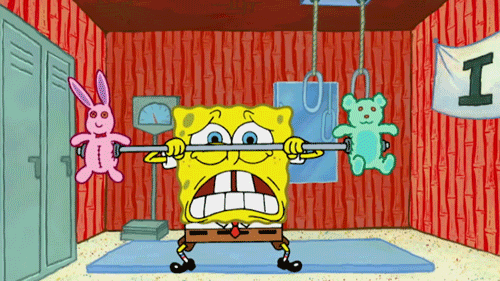Straight Sets & Supersets
When it comes to putting a lift together and picking our your exercises, there’s a lot of details to consider. One of those details is what kind of sets to use for different movements or parts of your lift.
Today we’re going over two (technically three) different kinds of sets that you might find inside a lift and likely have already seen “in the wild” or used yourself;
Straight sets,
Supersets &
Compound sets.
Straight sets are likely what you think of when you think of weight lifting.
In a straight set we perform a specific number of reps for one movement with a specific rest break to follow.
This is likely used for big, compound lifts and can be beneficial for beginners or advanced lifters to incorporate into their routine.
Straight sets naturally take more time to complete because we are resting after each individual set of one movement. If you’re short on time or just don’t feel like being in the gym for 60+ minutes, supersets and compound sets will be your best friend.
In a superset you are taking two exercises and performing them back to back before resting.
The muscles worked in superset exercises might directly oppose each other (chest & back) or they might not really be connected at all (hamstring & shoulders).
Supersets can also be broken down into more specific categories like pre-exhaustion, compound-isolation and strength-mobility supersets.
In pre-exhaustion supersets you’re identifying a muscle you want to “exhaust” or fatigue before going into your next exercise. This might be used if you’re working on balancing muscles, removing a compensation in a lift, or (for whatever reason) you want to hit a specific muscle really hard.
In compound-isolation supersets your combining a compound lift and an isolation lift. Similarly for strength-mobility supersets you’re combining a strength-based movement with a mobility movement/drill.
Technically, our next type of set is a superset, too: compound sets.
Even if you’re not familiar with the term “compound set”, I’d guess you definitely do know what they are and have seen them in action.
In a compound set you are taking two exercises that work the same muscle/group of muscles and performing them back to back before resting. Yes, this can be a bit of a technicality and is why I said you’ve seen them/know them but maybe just haven’t had the proper label for them.
In a compound set you might perform 5 inverted rows followed immediately by 8 db bent over rows and then rest for 90s.
Supersets will typically require less rest time than compound sets because you’re working different muscle groups that will be somewhat rested as you perform the other movement.
Of course there are a lot of other set variations out there besides straight sets, supersets and compound sets. Trisets, dropsets, AMRAPS, circuits, pyramid sets and cluster sets to name a few!
Each set can be used for a plethora of reasons and there is no “best” set to use because (as you’ve probably picked up on by now) there is no “right” or “wrong” way lift weights… there just might be a better way than others.
Reality is you can use these different sets to help you reach strength goals more efficiently/faster or you might use different types just because you enjoy them or it makes your workouts more interesting and enticing.
Again, there is no “wrong” way to go about it!
Have questions about what you’ve read today or want to hear more about the other sets I listed? Drop a comment and let me know!


